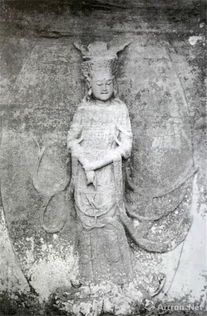您所在的位置:首页 - 艺术 - 正文艺术
石窟的英文单词
![]() 冠醇
2024-05-03
【艺术】
232人已围观
冠醇
2024-05-03
【艺术】
232人已围观
摘要Chinesecaveart,alsoknownas"石窟艺术"(shíkūyìshù)inChinese,isacaptivatingtestamenttotherichculturalherita
Chinese cave art, also known as "石窟艺术" (shíkū yìshù) in Chinese, is a captivating testament to the rich cultural heritage and artistic achievements of ancient China. It encompasses a diverse range of artistic styles and subjects, offering a window into the religious, social, and artistic practices of different periods in Chinese history.
The History of Chinese Cave Art
The tradition of cave art in China dates back over two millennia, with the earliest examples dating to the Northern Wei dynasty (386534 AD). The most renowned examples of Chinese cave art are found in the Mogao Grottoes in Dunhuang, Yungang Grottoes in Shanxi, Longmen Grottoes in Henan, and many other sites across the country. These sites feature thousands of caves adorned with intricate sculptures, vibrant murals, and inscriptions, offering invaluable insights into the spiritual and artistic practices of ancient Chinese society.
Themes and Subjects
Chinese cave art encompasses a wide array of themes, including representations of the Buddha and Buddhist deities, celestial beings, scenes from Buddhist sutras, as well as depictions of daily life, mythological stories, and historical events. The artistry and iconography of Chinese cave art reflect the interplay of diverse cultural and religious influences, ranging from indigenous Chinese beliefs to the introduction of Buddhism from India along the Silk Road.
Artistic Techniques and Styles
The artistic techniques employed in Chinese cave art are aweinspiring, with skilled artisans using a variety of mediums such as clay, wood, and stone to create sculptures, as well as employing the use of mineralbased pigments to adorn the cave walls with colorful murals. These techniques vary across different regions and time periods, showcasing the evolution and innovation of Chinese artistic expression.
Preservation and Conservation
Preservation of Chinese cave art is of paramount importance due to the fragility of the artworks and the environmental challenges posed by their subterranean locations. Efforts to protect and conserve these invaluable cultural treasures involve a combination of monitoring, documentation, structural support, and environmental controls to mitigate the impact of factors such as humidity, temperature, and human visitation.
Appreciating Chinese Cave Art
Studying and appreciating Chinese cave art provides a profound understanding of the cultural, spiritual, and artistic achievements of ancient China. Visitors to these sites are afforded a unique opportunity to witness the artistic legacy of past civilizations and contemplate the enduring beauty of these sublime creations.
As an art form that transcends time and borders, Chinese cave art continues to captivate and inspire people around the world, serving as a bridge between the past and the present, and fostering a deep appreciation for the cultural heritage of China.

Whether you are an art enthusiast, a historian, or a traveler with a passion for exploring ancient wonders, Chinese cave art offers a remarkable journey through the artistic and spiritual realms of China's rich past.
Tags: 石窟英语翻译 石窟艺术具有怎样的特点 石窟艺术怎么样英语翻译 石窟的英文怎么读
版权声明: 感谢您对【奚诗视窗网】网站平台的认可,无特别说明,本站所有文章均归【奚诗视窗网】平台所有,转载请说明文章出处“来源【奚诗视窗网】”。 https://www.tjdhgcc.com/post/5733.html
上一篇: 图书馆学专业就业方向及就业前景分析
下一篇: 冒险岛次元图书馆任务奖励



